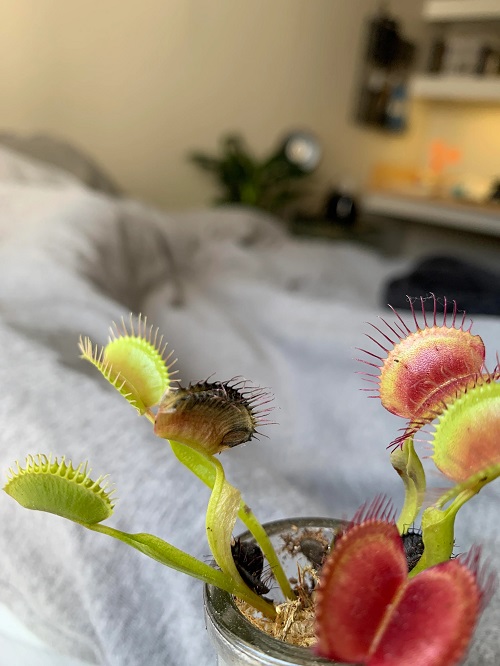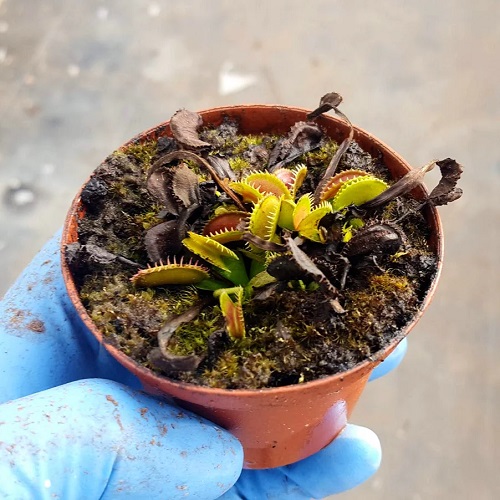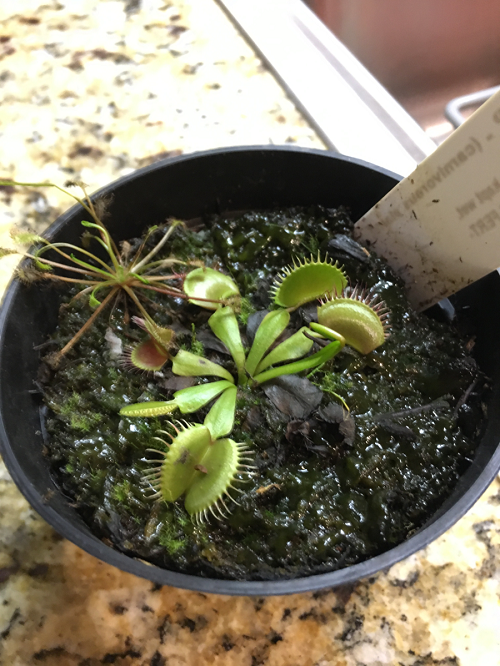Venus Flytrap Turning Black? Here are the best tips and tricks to restore their health and vibrant color!
Is your Venus Flytrap Turning Black? Don’t worry! We have all the reasons and solutions to help you keeping it green and thriving!
Check out Best Carnivorous Houseplants here
Venus Flytrap Turning Black – Reasons and Solutions
When the leaves of a Venus Flytrap (Dionaea muscipula) plant turn brown and black, it can indicate several possible issues. Here are some common reasons behind this discoloration:
1. Lack of Adequate Lighting

The first reason behind venus flytrap turning black is keeping it in the shade. These plants require bright, direct sunlight to thrive. Insufficient light can cause the leaves to turn brown and black.
Ensure that your plant receives at least 4-6 hours of direct sunlight each day. If necessary, consider using artificial grow lights to supplement the natural light.
Check 17 Ideas & Tips For Growing Carnivorous Plants In Containers here
2. Inadequate Watering
Second reason behind venus flytrap turning black is not watering the plants right. They need to be kept constantly moist but not waterlogged. If the soil is consistently too wet or too dry, the leaves can turn brown or black.
Ensure you water the plant with distilled water or rainwater, and keep the soil slightly damp at all times.
3. Poor Water Quality
Third reason behind venus flytrap turning black is the quality of water. These plants are sensitive to the minerals and chemicals found in tap water. Using tap water that contains high levels of minerals or chlorine can cause leaf discoloration.
Stick to distilled water or rainwater to provide the best water quality for your plant.
Check Aloe Plant Turning Brown – 7 Reasons and Solutions here
4. Unsuitable Soil
Fourth reason behind venus flytrap turning black is the use of the wrong growing medium. These plants require a specific type of soil that is low in nutrients and has good drainage. Using regular potting soil or soil mixes that are too rich in organic matter can lead to root rot and leaf discoloration.
Plant your Venus Flytrap in a mixture of sphagnum moss and perlite or sand to ensure proper drainage and nutrient balance.
5. Fertilizer Issues
Fifth reason behind venus flytrap turning black is fertlizer. Venus Flytraps are adapted to nutrient-poor environments, and excessive fertilization can lead to nutrient burn or toxicity.
Excessive fertilizer can also cause chemical burns on the sensitive roots of Venus Flytraps. The burned roots are less efficient in taking up water and nutrients, leading to stress and discoloration of the leaves.
If you choose to fertilize your Venus Flytrap, use a diluted fertilizer specifically formulated for carnivorous plants. Follow the instructions carefully and apply it at a lower concentration than recommended.
6. Dormancy Period

Venus Flytraps naturally go through a dormancy period during winter, where their leaves may turn brown or black. This is a normal part of their growth cycle, and new leaves will emerge in spring.
During dormancy, reduce watering and provide cool temperatures (around 50°F or 10°C) to support healthy dormancy.
Check Octopus Plant Growing Guide here
7. Pests or Fungal Issues
Aphids, spider mites, or fungal infections can cause leaf discoloration in Venus Flytraps. Inspect your plant closely for signs of pests or fungal growth.
Treat the issue with appropriate organic or chemical remedies if necessary.
8. Natural Aging Process
Venus flytraps have a limited lifespan, and as they age, it is normal for their leaves to turn black and die off naturally. Typically, older leaves in the center of the plant will darken and wither first, making room for new growth.
This process is a natural part of the plant’s life cycle and should not be a cause for alarm.
Check 8 Carnivorous Plant Terrarium Ideas here
9. Plant Trapping Something Too Big

To facilitate efficient digestion, the Venus flytrap relies on tightly sealing both sides of its leaves together. However, complications can arise when a trapped insect possesses long legs or large wings.
If these appendages extend beyond the trap, it hampers the plant’s ability to achieve a complete seal, leading to discoloration and potential death.
It is crucial to ensure that the food offered is no larger than one-third the size of the trap.



